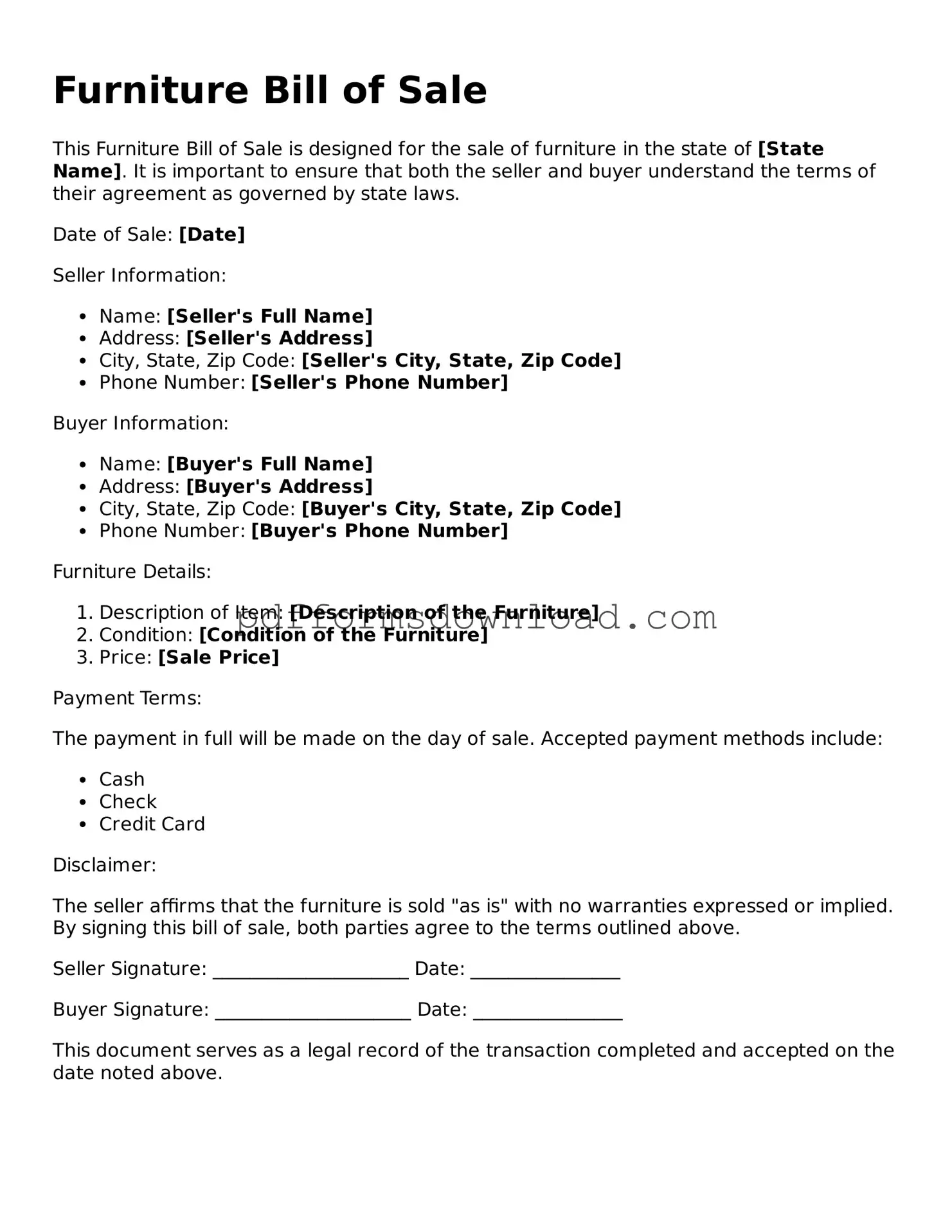What is a Furniture Bill of Sale?
A Furniture Bill of Sale is a legal document that records the sale of furniture from one party to another. It serves as proof of the transaction and includes details about the items sold, the sale price, and the parties involved. This document is important for both the buyer and seller for record-keeping and legal purposes.
Why do I need a Furniture Bill of Sale?
This document protects both the buyer and the seller. For the buyer, it provides proof of ownership and can be useful if disputes arise. For the seller, it confirms that the item has been sold and can help prevent future claims of ownership. Additionally, having a written record can simplify any potential legal issues in the future.
What information should be included in the Furniture Bill of Sale?
The Furniture Bill of Sale should include the names and addresses of both the buyer and seller, a description of the furniture being sold (including brand, model, and condition), the sale price, and the date of the transaction. It may also include terms of the sale, such as warranties or return policies.
Is a Furniture Bill of Sale required by law?
While a Furniture Bill of Sale is not always legally required, it is highly recommended. Some states may have specific requirements for certain types of sales, but generally, having this document can help avoid misunderstandings and provide a clear record of the transaction.
Can I create my own Furniture Bill of Sale?
Yes, you can create your own Furniture Bill of Sale. Many templates are available online that can guide you in drafting a comprehensive document. Just ensure that it includes all necessary information and is signed by both parties to make it valid.
What happens if the furniture is damaged after the sale?
Typically, once the sale is complete and the Furniture Bill of Sale is signed, the seller is no longer responsible for the item. The document may include specific terms regarding damages or returns, so it is important to clarify these points before finalizing the sale.
Do I need witnesses or notarization for the Furniture Bill of Sale?
Generally, a Furniture Bill of Sale does not require witnesses or notarization to be valid. However, having a witness or notarizing the document can add an extra layer of security and may be required in certain situations or jurisdictions.
Can I use a Furniture Bill of Sale for online transactions?
Yes, a Furniture Bill of Sale can be used for online transactions as well. It is important to ensure that both parties agree to the terms and conditions of the sale, and that the document is signed by both parties, even if the transaction occurs remotely.
What should I do if I lose my Furniture Bill of Sale?
If you lose your Furniture Bill of Sale, you can create a new one, but both parties should agree to the new document. It’s advisable to keep a copy of the bill in a safe place and consider storing it digitally to prevent future loss.
Is there a fee associated with obtaining a Furniture Bill of Sale?
There is typically no fee to create a Furniture Bill of Sale, especially if you draft it yourself. However, if you choose to use a legal service or purchase a template, there may be associated costs. Always consider your options and choose what best fits your needs.
